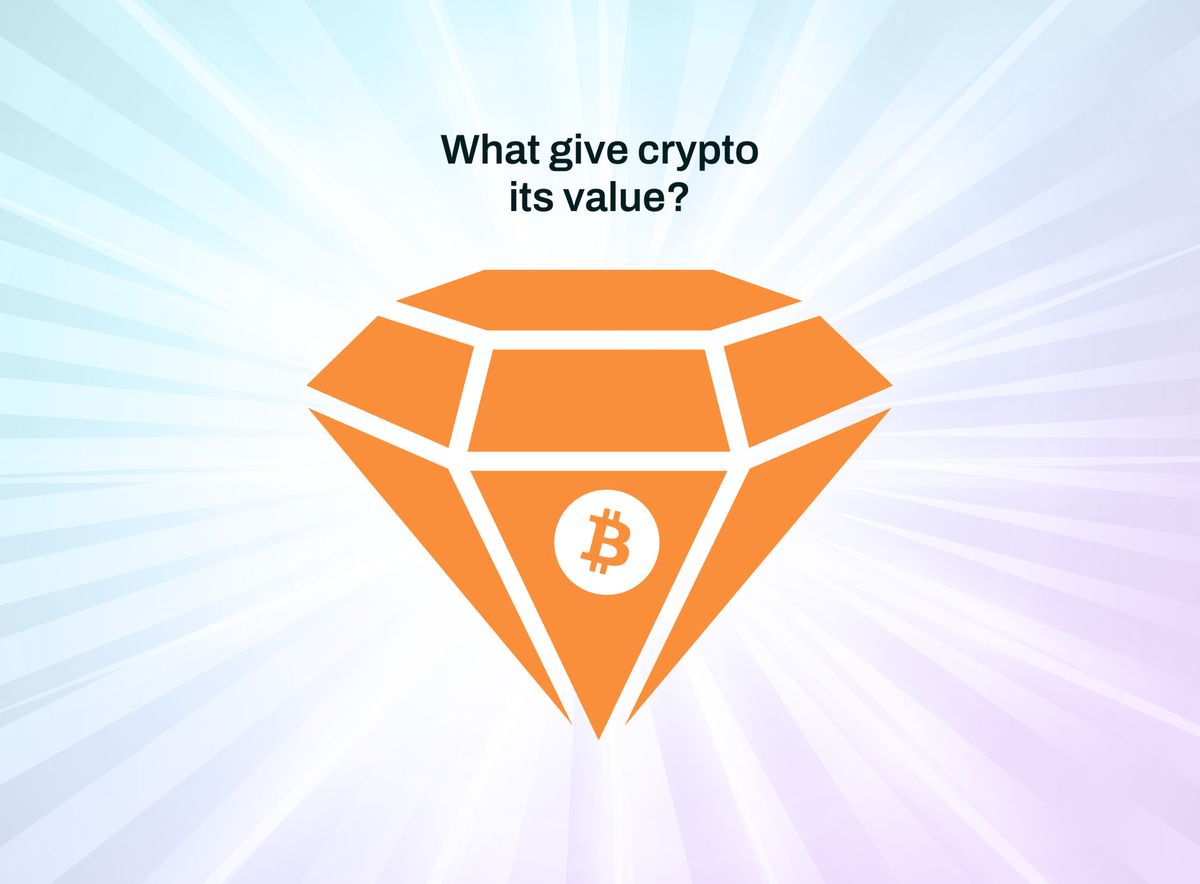💰 What Gives Cryptocurrency Its Value? A Complete Breakdown
Cryptocurrency, unlike traditional currencies backed by governments or commodities like gold, is digital and decentralized. So what actually gives crypto its value? It’s a blend of technology, economics, market psychology, utility, and trust.
Below is a deep dive into the major factors that contribute to the value of cryptocurrencies like Bitcoin (BTC), Ethereum (ETH), and other altcoins.
🧱 1. Scarcity (Limited Supply)
One of the strongest drivers of value in crypto is scarcity.
- Bitcoin, for example, has a fixed supply of 21 million coins.
- This is similar to how gold has intrinsic value due to its limited quantity in nature.
- The concept is called digital scarcity — only a certain number of units will ever exist, making them deflationary assets (as opposed to fiat currencies which governments can print endlessly).
Effect: Limited supply + rising demand = increasing value.
⚙️ 2. Utility (How Useful It Is)
A cryptocurrency’s value also comes from its utility — what it can actually be used for:
- Ethereum (ETH) is valuable because it’s used to pay gas fees to run smart contracts and decentralized apps (dApps).
- Chainlink (LINK) brings real-world data to blockchains — making it vital for DeFi apps.
- Monero (XMR) is used for anonymous transactions.
The more a coin is used in a real-world scenario, the more valuable it becomes.
🔐 3. Security and Network Integrity
The more secure a network is, the more trust people place in it — and trust = value.
- Bitcoin’s blockchain is the most secure due to its high hash rate (computing power used in mining).
- A well-secured network discourages hacking or manipulation, giving users confidence in using or holding the cryptocurrency.
Security attracts long-term investors and institutions.
👥 4. Demand and Market Sentiment
Just like stocks or real estate, market psychology and perception play a huge role:
- News events, celebrity endorsements (like Elon Musk tweeting about Dogecoin), or even memes can spark a price surge.
- Hype, FOMO (Fear of Missing Out), and social media discussions affect price, even more than fundamentals in some cases.
Example: Shiba Inu (SHIB) and Dogecoin surged due to community support and hype, not utility.
🌐 5. Decentralization and Trustlessness
One of the core appeals of crypto is decentralization:
- Unlike traditional money controlled by banks or governments, crypto can be stored, transferred, or spent without needing permission or middlemen.
- This gives people financial sovereignty and appeals strongly in regions with unstable currencies or oppressive banking systems.
The more decentralized and censorship-resistant, the higher the perceived value.
📉 6. Inflation Hedge / Store of Value
- Bitcoin is often referred to as “digital gold” because of its role as a hedge against inflation.
- With many governments printing money during crises (like COVID-19), people turn to assets like BTC to protect purchasing power.
Investors see it as a long-term store of value.
🔄 7. Liquidity
Liquidity refers to how easily an asset can be bought or sold without affecting the price.
- High liquidity = more market participants = more stable and trustworthy value.
- Top cryptocurrencies like BTC and ETH are listed on almost every exchange and can be easily traded.
Low liquidity = higher risk and more volatile prices.
🏗️ 8. Ecosystem and Developer Support
The broader a coin’s ecosystem, the more valuable it becomes:
- Ethereum has thousands of dApps, developers, and tools built on top of it.
- A strong developer community means continuous updates, innovation, and resilience against bugs or attacks.
More usage = more value = more developer interest = cycle of growth.
📈 9. Adoption by Users and Businesses
- The more individuals, companies, and even governments accept a crypto, the more valuable it becomes.
- Examples:
- Tesla accepting (and then halting) BTC payments affected its value.
- El Salvador adopting Bitcoin as legal tender gave it global legitimacy.
Adoption creates real-world demand, which supports price.
📝 10. Regulatory Clarity (or Uncertainty)
- Clarity in regulations helps build confidence, particularly among institutional investors.
- Positive regulation = price support.
- On the flip side, bans or threats (like China’s mining ban) can cause value to drop.
Cryptocurrencies that can comply with regulations often see long-term growth in value.
🤖 11. Innovation and Technology
Some cryptocurrencies bring breakthrough innovations to the table:
- Ethereum introduced smart contracts.
- Polkadot enables cross-chain interoperability.
- Solana is known for high-speed, low-cost transactions.
Coins that solve real blockchain problems (speed, scalability, privacy) often gain value quickly.
🛡️ 12. Community Strength and Governance
- A passionate, active community is a major intangible asset.
- Decentralized projects often rely on their users to propose, vote on, and fund changes (DAO governance).
- Projects with engaged communities often survive longer and maintain value better in downturns.
🔮 Final Thoughts: So, What Really Gives Crypto Value?
In essence, cryptocurrency gets its value from a combination of:
✅ Scarcity
✅ Utility
✅ Trust and security
✅ Market demand
✅ Ecosystem and community support
✅ Adoption
✅ Innovation
✅ Freedom from traditional finance
It’s not a single factor — it’s a complex web of technical, social, and economic elements.
As the crypto space matures, expect value to shift more towards fundamentals and utility, rather than just hype or speculation.




